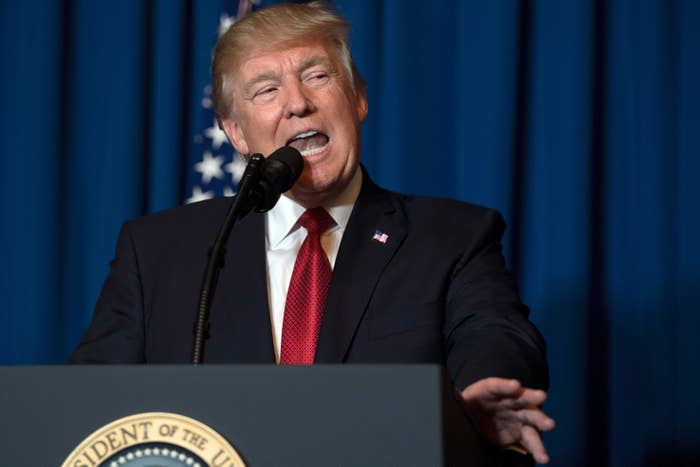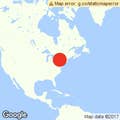
The White House decision to publicly warn Syria about its chemical weapons use marked a potential shift in strategy in handling Syria's chemical arsenal — and revealed an administration that keeps big decisions close to its chest.
At a minimum, the White House’s warning late on Monday night suggested an ad hoc decision to publicly pressure Syria over its use of chemical weapons. Three US officials told BuzzFeed News that the White House hoped its statement would deter the regime from using such weapons. Nearly 24 hours later, it appears to have worked.
“I think it is part of a Syria policy. I think the administration is clear that the use of chemical weapons is a red line and they are defining that,” Andrew Tabler, a Syria expert at the Washington Institute for Near East Policy told BuzzFeed News.
The warning pointed to a White House that closely manages decision-making. Top-level leaders were aware of the administration's approach — and some were communicating with Russia about their concerns — but lower-level US officials were caught flat-footed by a new tactic toward the war in Syria, creating a climate of confusion around an already ominous statement.
Secretary of State Rex Tillerson spoke to his Russian counterpart about the issue. Lt. Gen. Stephen Townsend, the commander of the US war against ISIS, also made calls to mitigate the threat of a Syrian chemicals weapons attack in a conversation with Russian officials, a senior defense official told BuzzFeed News. But many officials said they knew nothing about Monday night's statement, or the evidence that led to it being made. It wasn’t until Tuesday morning that officials were able to spell out what had prompted the warning to the government of Syrian President Bashar al-Assad.
Navy Capt. Jeff Davis, a Pentagon spokesperson, told reporters on Tuesday that US intelligence had first become aware during the previous day that the Syrian government was moving SU-22, the kind of aircraft needed to deliver chemical weapons, at Shayrat airfield. In April the Syrian government launched a chemical attack on civilians from that airfield, which the US subsequently struck with 59 Tomahawk cruise missiles.
US intelligence also reported intercepting “chatter” from Syrian forces on the ground indicating preparations for a possible imminent chemical weapons attack, a defense official told BuzzFeed News. That intelligence prompted the White House to produce a message on Monday night that gave little further explanation.

“The United States has identified potential preparations for another chemical weapons attack by the Assad regime that would likely result in the mass murder of civilians, including innocent children. The activities are similar to preparations the regime made before its April 4, 2017 chemical weapons attack,” the White House statement read. “As we have previously stated, the United States is in Syria to eliminate the Islamic State of Iraq and Syria. If, however, Mr. Assad conducts another mass murder attack using chemical weapons, he and his military will pay a heavy price.”
It’s also unclear how much debate went into the White House decision to go public with its concerns, and whether any US intelligence agencies objected to making a public pronouncement based on classified intelligence.
Also unknown is whether the Trump administration now intends to publicize intelligence every time it learns of a possible use of chemical weapons — a course that might eventually reveal US intelligence-gathering capabilities to the Syrians, and force the US to decide whether to take new action.
The lack of a clear policy toward Syria has hovered over every major military action in the country under the Trump administration. After the US strike in April, some concluded that the US would launch similar strikes against the Syrian regime following every suspected chemical weapons attack. But at the time, Secretary of Defense Jim Mattis instead called the US retaliation attack on the Shayrat airfield a "singular" act, and said it did not indicate a change in US military policy in Syria, which remains focused on defeating ISIS.
In the past, the US has said almost nothing about what it knew in advance of the various chemical attacks the Syrian government has launched during the six-year civil war. In 2013, then-secretary of state John Kerry said that the administration had seen signs of preparations in the days leading up to a chemical weapons attack in the Ghouta suburbs of Damascus that killed hundreds of people. The revelation led to angry denunciations from opponents of Syrian President Assad that the US had not warned them of the coming assault.
The Ghouta attacks were the deadliest use of chemical weapons to date in the Syrian war. April’s chemical attack, which gave rise to the US assault on the Shayrat airfield, was the second-deadliest, killing 74 people in the town of Khan Sheikhoun.
Russia denounced the US threat on Tuesday, but the reaction from Syria was muted. Neither Mattis nor Tillerson publicly discussed on Tuesday what they hoped to see happen as a result of the statement, or how the US would respond if the Assad regime did launch a chemical weapons attack.
The administration on Tuesday pushed back on the idea that any confusion had existed at all. State Department spokesperson Heather Nauert said Tillerson spoke with President Trump about the chemical weapons in a statement earlier in the day on Monday. "That's what matters," she said. She declined to say how that information "filtered down" to the rest of the department. The White House itself insisted that all “relevant” departments and agencies were aware before the statement went out.
US officials were standing by, meanwhile, to see if the threat of action would prove an effective pre-emptive strike — one that does not deploy a single weapon.
John Hudson contributed reporting from Washington, DC.

